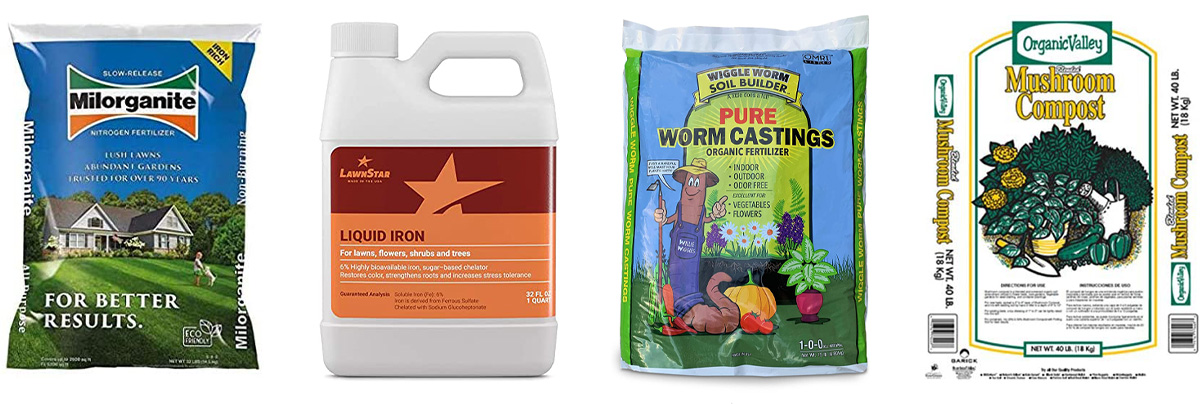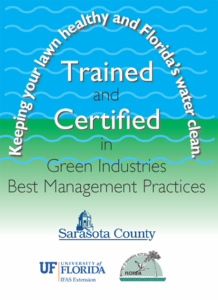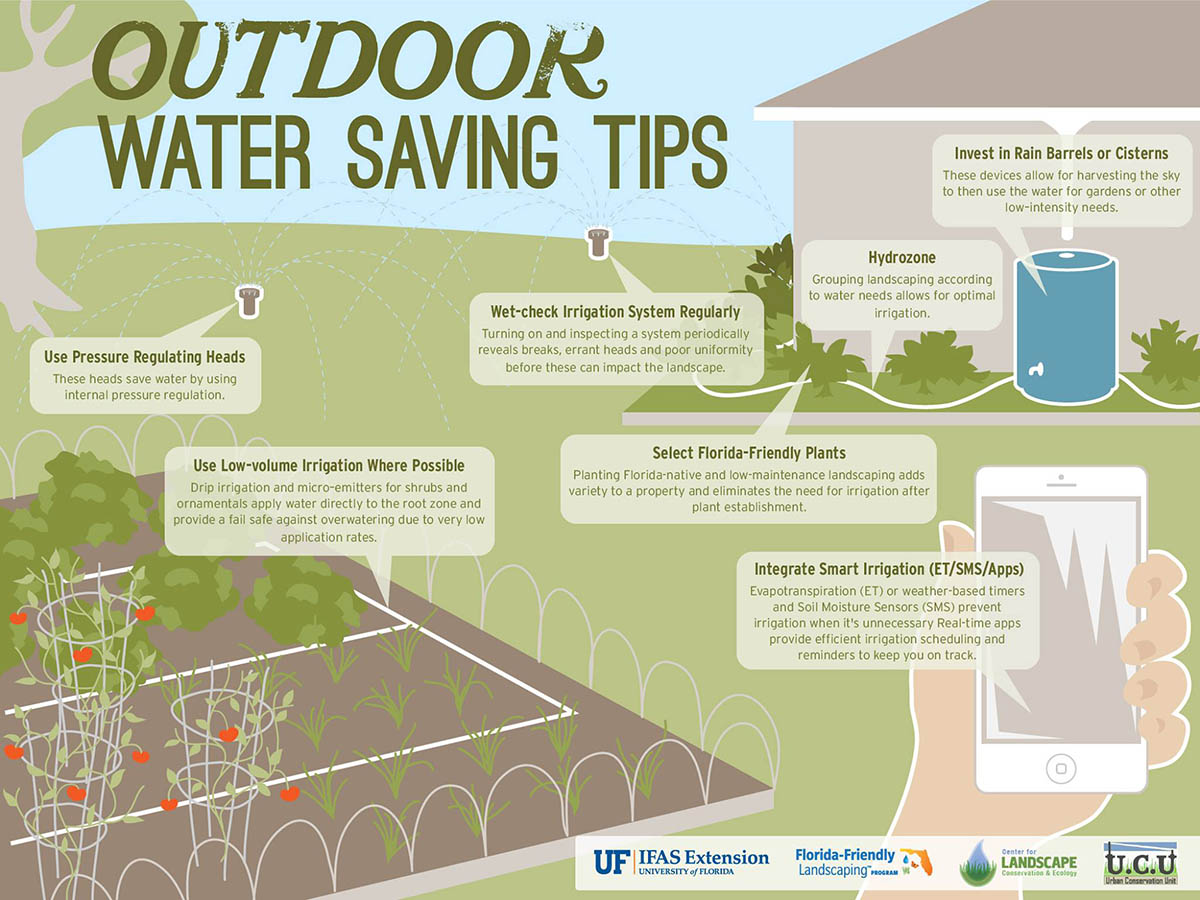Landscape Like a Floridian
Lush lawns aren’t so “green” when it comes to our environment. Half of household water on average goes to irrigation. Lawn fertilizer and pesticides can seep into the groundwater we drink and hitchhike with rainfall runoff to the creeks and bays where we play, threatening to spoil the very reasons we love living here. For a sustainable landscape, reduce fertilizer use, replace high-maintenance turfgrass with eco-friendly plants, and curb stormwater pollution.

The nine Principles of the Florida-Friendly Landscaping™ Program cover all the basics of managing your yard to protect water quality in our creeks and bays. We’ve sifted through them all for tips that are easiest and most effective.
Summer rains don’t water fertilizer in, they wash it into the nearest waterway. Nitrogen and phosphorus in fertilizer runoff contribute to algae blooms that deplete oxygen, smother life-sustaining seagrasses, and suffocate fish. That’s why both Manatee and Sarasota counties ban the use of lawn and landscape fertilizers with nitrogen or phosphorus during the June-September rainy season and why at least 50 percent slow-release fertilizer is required during the rest of the year. Overall, well maintained, healthy landscapes with minimal chemical inputs are the best option for reducing runoff potential.
If you need to fertilize your lawn and landscape, do it April or October (not in the winter when grass is dormant), and use at least 50% slow-release product that nourishes plants gradually for a longer period. Look on the label to find the percent “Slowly Available Nitrogen” and divide by the percent “Total Nitrogen”. In summer, use micro-nutrient products without nitrogen or phosphorous (look for fertilizer bags where the first two numbers are 0-0) to green up your grass without making it grow.
While organic fertilizer formulas are far better than synthetic for the climate and building long-term soil health, they still contain nitrogen and phosphorus and should not be used during the summer ban. Mulch and organic soil amendments can be used year-round to build soil health and function, which reduces the need for extra water and fertilizer.

Did you know? Your irrigation water could be loaded with plant food already. Homeowners who irrigate with reclaimed water can skip fertilizer because the water already carries nutrients left over from the wastewater treatment process. Find out if your irrigation water already provides the nutrients your landscaping needs with this handy reclaimed water locator tool.
 Not into yard work? We get it. But make sure whomever you hire is a green industry certified professional (certification look-up) with a fertilizer license. This ensures they are code compliant and trained in best practices for Florida landscapes. Look for the decal on their vehicle and trailer.
Not into yard work? We get it. But make sure whomever you hire is a green industry certified professional (certification look-up) with a fertilizer license. This ensures they are code compliant and trained in best practices for Florida landscapes. Look for the decal on their vehicle and trailer.
Grass is needy. In Florida, achieving a picture-perfect lawn takes lots of water, fertilizer, and pesticides. Watering the average-sized lawn 20 minutes every day for a week is like taking 800 showers. Using an in-ground sprinkler system may cost you $5 to $25 every time you irrigate. Additionally, cleaning up waterways polluted with excess nutrients and chemicals from lawns costs a whole lot more than preventing the pollution in the first place.
Limiting the amount of grass in your yard to pet or play areas delivers outsized benefits. You’ll use less water, pesticides, and fertilizer. You’ll also mow less and relax more – and isn’t having more leisure time what living in Florida is all about? Replace turfgrass with an easy-care groundcover, a flagstone pathway or that vegetable garden you’ve always wanted. Expand existing landscape beds instead of using a grass border, and consider only keeping grass in highly traveled areas. Stop Mowing, Start Living.
Pro-Tip: If you live in an HOA, be sure to check your covenants before making landscape changes. Florida law allows homeowners in deed-restricted communities to install Florida-friendly landscapes, but you’ll still need to meet the aesthetic style of your community. You’ll often have more leeway to go grass-free in side or backyards. Follow these four steps to help you get a “green thumbs-up” from your HOA Board for shrinking your lawn.
Watch a DIY guide that shows you step-by-step how to ditch your grass for good. Pro-Tip: Visit your local bicycle shop to collect extra-large cardboard boxes.
Decorative Borders – Add curb appeal by adding and expanding landscaped beds and hardy groundcover along walkways and around existing trees, removing those thin strips of grass. Plan and execute with this step-by-step guide perfect for homes in newer master planned communities.
Lawn to Wildflowers – Learn how to transform a 6-foot by 6-foot patch of your yard into a pollinator garden with this cool how-to guide about wildflowers, pollinators, and seeds.
As rainfall runs off land into the nearest water body, it picks up fertilizer and chemical residues from yards, pet waste, oils and greases from streets and parking lots, and all types of litter. Dirty stormwater is the major cause of water pollution in our bays, lakes, and streams. We can reduce this pointless pollution by never dumping grass clippings, leaves, trash or used motor oil down storm drains and always picking up after pets—in the yard and on the go.
Intercepting rain where it falls is ideal for reducing runoff that carries pollution.
Image Credit: Missouri Botanical Garden

Don’t just set it and forget it. Inspect and repair your irrigation system regularly to make sure it’s not watering the sidewalk or the driveway. Use this 4-Step Checklist for Irrigation System Maintenance, Guide to Calibration & Programming, and tips for DIY “wet-check” trouble shooting (aka running through the sprinklers).
Pro-Tip: Residents and businesses can schedule a free evaluation of their sprinkler system with the Mobile Irrigation Lab.
Find out what’s happening and join in with our comprehensive community events listing.
Look for these classes
Rain from roofs can be collected via downspouts into rain barrels for watering plants. Rain barrels are made easy with these discounted kits.
Outdoor Water Conservation Rebate Program – Residents in Manatee County can receive a rebate for up to $3,500 per property for taking steps to reduce outdoor water usage by installing water saving irrigation and landscaping retrofits.
Summer is the rainy season in Florida—it rains almost every day. Summer storms can wash fertilizer off lawns into the bays, rivers, lakes and oceans that are the source of our fun. Fertilizer pollution contributes to algae blooms and kill fish. That’s why more than 90 communities throughout Florida – including Sarasota and Manatee counties – have restricted the use of lawn and landscape fertilizers from June-September. If you want to fertilize your lawn, do it in April and early October, using a slow-release product that nourishes the grass gradually over a longer period. In summer, you can use products without nitrogen or phosphorus (look for fertilizer bags where the first two numbers are 0-0) or apply iron in late summer to green up your grass without promoting growth.
The list of alternatives to grass is long and does not include gravel! Several even fall into the “no mow” category. How about a low-growing groundcover like Asiatic jasmine (Jasmine minima) that does well in sun or shade? Or perennial peanut, sunshine mimosa, and dune sunflower. Or you can use a grass-like plant such as liriope or flax lily. Or create one or more landscape beds bordering a meandering pathway and fill those beds with hardy shrubs like juniper and coontie, or native wildflowers that attract butterflies and bees. Or create an outdoor patio with flagstones or brick pavers, and maybe an arbor with a fragrant flowering vine. Or… you get the picture: The possibilities are endless! DOWNLOAD GUIDE
No. Many mosquitoes need standing water to lay eggs. If you landscape in a way that allows water to soak into the ground or into a planted area, like a rain garden, the conditions will not be favorable for them to breed. However, it is important to keep an eye on potential areas that do collect standing water, like a bird bath, empty tire, or watering can. Flip these over after a rain or empty them out every 5 days. Bromeliads are a particular favorite for mosquitoes as well because they can hold water for several days after a rain. Flush them out every 5 days or treat them with Bacillus thuringiensis israeli (i.e. BTI mosquito bits) to get rid of larvae. Make sure your gutters are cleaned out and do not store water either. Keep yard material away from clogging storm drains and report standing water in areas, like roadways, that usually do not have water.
Stormwater runoff from neighborhoods is the number one source of pollution in local creeks and bays, mainly because there is simply so much rainwater that flows off properties and picks up pollutants along the way. However, there are several ways to reduce the environmental impact of your yard:
Submit your water-related question to local experts. If selected, they will answer and feature your question on our FAQ. Not all questions will be answered.
This site protected by reCAPTCHA and the Google Privacy Policy and Term of Service apply.
©2025 Science and Environment Council of Southwest Florida | Site by Chariot.